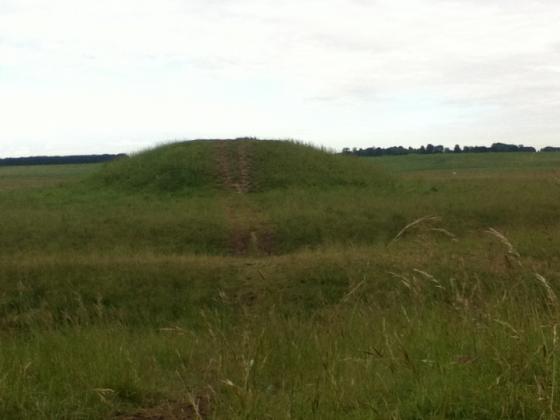Jimit tells it like it is... this most certainly is ‘an extraordinarily large and fine barrow’, tucked away near the arguably much better known White Barrow. Except it’s not... tucked away, that is... being clearly visible, silhouetted upon a ridge between two tree-lines, when viewed near the prominent water tower. Guess you just need to know what you are looking at, I suppose. And no doubt Neolithic people approaching the site from this direction appreciated the built-in drama of the journey. Now you see it.... now you don’t. Ah, there it is. Wow! Theatrics, certainly, but there can not have been any inherent triviality here.
Nothing, however, prepares me for the sheer size – both the length and height – of this fabulous monument upon arrival at close quarters. Just how it managed to survive in such an intact state with tanks previously running amok over it (as cited by Dyer) I’ve no idea, but it goes without saying I’m more than happy to accept such anomolies when they occur. Suffice to say soldiers have certainly been here, unless yer average Neolithic farmer used 0.303 rifle cartridges....
What’s more, the barrow is flanked by pretty substantial quarry ditches along both flanks, albeit overflowing with the flowers and weeds of high summer, these somewhat disguising both form and depth. Come to think of it, aren’t wild flowers and weeds one and the same? Nevertheless I’ll refrain from a eulogy to the weed, however, in case some people get the wrong idea. Not my scene, that.
Old Ditch Longbarrow and the neighbouring White Barrow, clearly visible to approx SE, most certainly are my scene, though. Perimeter signs warn visitors not to dig in the environs (I’m assuming rabbits can’t read, then?) – or drive their tank if they happen to possess one. I’m happy to abide by both requests, but nonetheless ‘dig’ Old Ditch in my own way.












































































































































